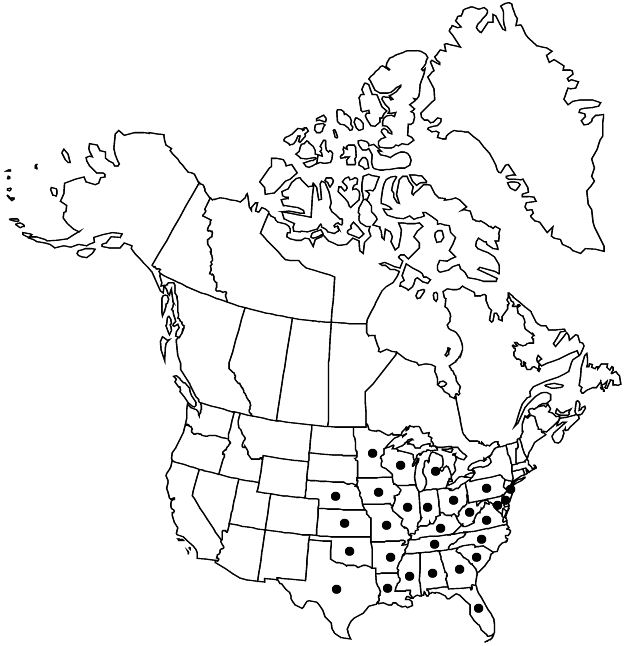Difference between revisions of "Croton glandulosus var. septentrionalis"
in A. P. de Candolle and A. L. P. P. de Candolle, Prodr. 15(2): 686. 1866.
FNA>Volume Importer |
imported>Volume Importer |
||
| (6 intermediate revisions by 2 users not shown) | |||
| Line 1: | Line 1: | ||
{{Treatment/ID | {{Treatment/ID | ||
|accepted_name=Croton glandulosus var. septentrionalis | |accepted_name=Croton glandulosus var. septentrionalis | ||
| − | |accepted_authority=Müller Arg. | + | |accepted_authority=Müller Arg. |
|publications={{Treatment/Publication | |publications={{Treatment/Publication | ||
| − | |title=Prodr. | + | |title=in A. P. de Candolle and A. L. P. P. de Candolle, Prodr. |
|place=15(2): 686. 1866 | |place=15(2): 686. 1866 | ||
|year=1866 | |year=1866 | ||
| Line 18: | Line 18: | ||
|name=Croton glandulosus var. angustifolius | |name=Croton glandulosus var. angustifolius | ||
|authority=Müller Arg. | |authority=Müller Arg. | ||
| − | }}{{Treatment/ID/Synonym | + | |rank=variety |
| + | }} {{Treatment/ID/Synonym | ||
|name=C. glandulosus var. crenatifolius | |name=C. glandulosus var. crenatifolius | ||
|authority=A. M. Ferguson | |authority=A. M. Ferguson | ||
| − | }}{{Treatment/ID/Synonym | + | |rank=variety |
| + | }} {{Treatment/ID/Synonym | ||
|name=C. glandulosus var. shortii | |name=C. glandulosus var. shortii | ||
|authority=A. M. Ferguson | |authority=A. M. Ferguson | ||
| − | }}{{Treatment/ID/Synonym | + | |rank=variety |
| + | }} {{Treatment/ID/Synonym | ||
|name=C. glandulosus var. simpsonii | |name=C. glandulosus var. simpsonii | ||
|authority=A. M. Ferguson | |authority=A. M. Ferguson | ||
| + | |rank=variety | ||
}} | }} | ||
|hierarchy=Euphorbiaceae;Croton;Croton glandulosus;Croton glandulosus var. septentrionalis | |hierarchy=Euphorbiaceae;Croton;Croton glandulosus;Croton glandulosus var. septentrionalis | ||
| Line 42: | Line 46: | ||
|elevation=0–900 m. | |elevation=0–900 m. | ||
|distribution=Ala.;Ark.;Del.;Fla.;Ga.;Ill.;Ind.;Iowa;Kans.;Ky.;La.;Md.;Mich.;Minn.;Miss.;Mo.;Nebr.;N.J.;N.C.;Ohio;Okla.;Pa.;S.C.;Tenn.;Tex.;Va.;W.Va.;Wis. | |distribution=Ala.;Ark.;Del.;Fla.;Ga.;Ill.;Ind.;Iowa;Kans.;Ky.;La.;Md.;Mich.;Minn.;Miss.;Mo.;Nebr.;N.J.;N.C.;Ohio;Okla.;Pa.;S.C.;Tenn.;Tex.;Va.;W.Va.;Wis. | ||
| − | |discussion=<p>Variety septentrionalis is by far the most widespread variety of Croton glandulosus in North America, and the only one present north of Florida in the east and north of Oklahoma and Kansas in the Midwest.</p> | + | |discussion=<p>Variety septentrionalis is by far the most widespread variety of <i>Croton glandulosus</i> in North America, and the only one present north of Florida in the east and north of Oklahoma and Kansas in the Midwest.</p> |
|tables= | |tables= | ||
|references= | |references= | ||
| Line 51: | Line 55: | ||
-->{{#Taxon: | -->{{#Taxon: | ||
name=Croton glandulosus var. septentrionalis | name=Croton glandulosus var. septentrionalis | ||
| − | + | |authority=Müller Arg. | |
| − | |authority=Müller Arg. | ||
|rank=variety | |rank=variety | ||
|parent rank=species | |parent rank=species | ||
| Line 63: | Line 66: | ||
|distribution=Ala.;Ark.;Del.;Fla.;Ga.;Ill.;Ind.;Iowa;Kans.;Ky.;La.;Md.;Mich.;Minn.;Miss.;Mo.;Nebr.;N.J.;N.C.;Ohio;Okla.;Pa.;S.C.;Tenn.;Tex.;Va.;W.Va.;Wis. | |distribution=Ala.;Ark.;Del.;Fla.;Ga.;Ill.;Ind.;Iowa;Kans.;Ky.;La.;Md.;Mich.;Minn.;Miss.;Mo.;Nebr.;N.J.;N.C.;Ohio;Okla.;Pa.;S.C.;Tenn.;Tex.;Va.;W.Va.;Wis. | ||
|reference=None | |reference=None | ||
| − | |publication title=Prodr. | + | |publication title=in A. P. de Candolle and A. L. P. P. de Candolle, Prodr. |
|publication year=1866 | |publication year=1866 | ||
|special status=Weedy;Endemic | |special status=Weedy;Endemic | ||
| − | |source xml=https:// | + | |source xml=https://bitbucket.org/aafc-mbb/fna-data-curation/src/2e0870ddd59836b60bcf96646a41e87ea5a5943a/coarse_grained_fna_xml/V12/V12_732.xml |
|genus=Croton | |genus=Croton | ||
|species=Croton glandulosus | |species=Croton glandulosus | ||
Latest revision as of 19:17, 5 November 2020
Plants 2–12 dm. Stems moderately stellate-hairy, hairs appressed, radii equal. Leaves: petiole apical glands sessile, wavy-wrinkled when dry, 0.5–0.8 mm diam.; blade 2–7 × 0.7–3 cm, length mostly more than 2 times width, membranous, marginal teeth pointed, both surfaces moderately stellate-hairy; base 3-veined.
Phenology: Flowering May–Nov.
Habitat: Sand dunes, old fields, roadsides, waste places, cultivated land.
Elevation: 0–900 m.
Distribution

Ala., Ark., Del., Fla., Ga., Ill., Ind., Iowa, Kans., Ky., La., Md., Mich., Minn., Miss., Mo., Nebr., N.J., N.C., Ohio, Okla., Pa., S.C., Tenn., Tex., Va., W.Va., Wis.
Discussion
Variety septentrionalis is by far the most widespread variety of Croton glandulosus in North America, and the only one present north of Florida in the east and north of Oklahoma and Kansas in the Midwest.
Selected References
None.